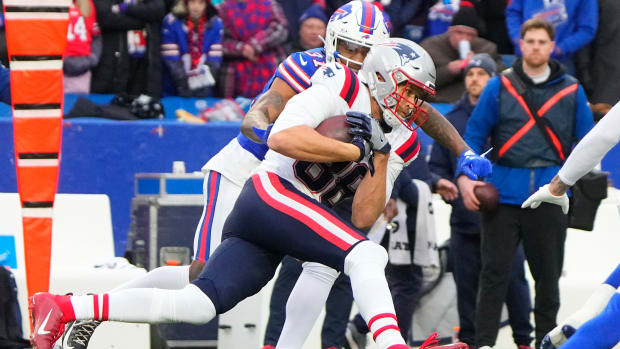State of 2022 Seahawks Requires Patience, Especially at Quarterback
“It just brought me back to this energy of the 2012 draft,” John Schneider said of the media coverage around the NFC West and the Seahawks' 2022 draft outlook. Yet the Seattle general manager’s pre-draft comments should feature a “READ THE SMALL PRINT” warning.
Now 10 years on from 2012, the 2022 draft—and season—should be viewed with more patience. This season should be packed with a tolerance and stoicism that extends to the quarterback position, whether it is Geno Smith, Drew Lock or a rookie pick under center.
Why? Well, 2012 saw a young roster blossom together, while 2022 is a dramatically different proposition from both a talent and cap standpoint.
The positive of losing franchise quarterback Russell Wilson is the cap space created from clearing his hefty contact off the books, freeing the team to spend that money on the rest of the roster. Wilson’s last contract signed with the team took up a per-year average of 18.6 percent of the cap.
However, the Wilson trade has left Seattle with $26 million of dead money in 2022, or 11.97 percent of its cap. In total, the Seahawks have a staggering 20.53 percent of their cap taken up by dead money. That’s fourth-most in the league (the Falcons lead the league with 29.84 percent). In 2023, Wilson’s dead money will be completely off the books.
Therefore, financially speaking, Seattle’s spending power next offseason will be far greater. In 2023, Spotrac estimates the organization's top-51 cap space at $70,133,287; Over The Cap has it at $86,463,328. In terms of players the Seahawks will want to re-sign, DK Metcalf is the obvious big name. Poona Ford, Rashaad Penny and Cody Barton may earn new deals too. The extra money from not having a franchise quarterback will be felt even if all these players are retained.
The existing veteran player contracts are not dissimilar from 2023 to 2012. Seattle’s two highest contracts on the books for 2023 are Jamal Adams (8.23 percent of the cap, per Over The Cap) and Quandre Diggs (8.22 percent). In 2012, Seattle’s highest earners were paid similar, although there was the lack of the true elite contract. Russell Okung accounted for 7.4 percent, Sidney Rice 6.8 percent and Zach Miller 5.8 percent.
The 2012 roster saw Russell Wilson’s third-round rookie deal enter the books. The highest paid quarterback was free agent addition Matt Flynn. Per Over The Cap, Flynn’s salary accounted for just 3.3 percent of the cap that season. The ex-Packer's average per year as a percentage of the cap came in at 5.4 percent.
Meanwhile, the 2022 roster has not been replenished with younger talent at even close to the level 2012 was.
The 2012 campaign was preceded by nine draft picks in 2010, with four arriving in the top-120—three in the top-100, three in the top-75 and two in the top-15. Seattle's 2011 class featured another nine draft picks, with four coming in the top-120, three in the top-100 and two in the top-75.
The 2012 draft itself then contained 10 picks: five in the top-120, three in the top-100, three in the top-75 and one in the top-15.
For 2022, the Seahawks have eight picks, with five in the top-120, four in the top-100, three in the top-75 and one in the top-15. However, the trade that brought Adams over from the Jets in 2020 resulted in a lack of assets for the 2021 draft.
All of this means that the 2023 season is where Seattle will be in a better position to compete. Next year’s financial benefits and more stocked roster should see the Seahawks be more effective at protecting and carrying a lesser contract quarterback than they are in 2022.





